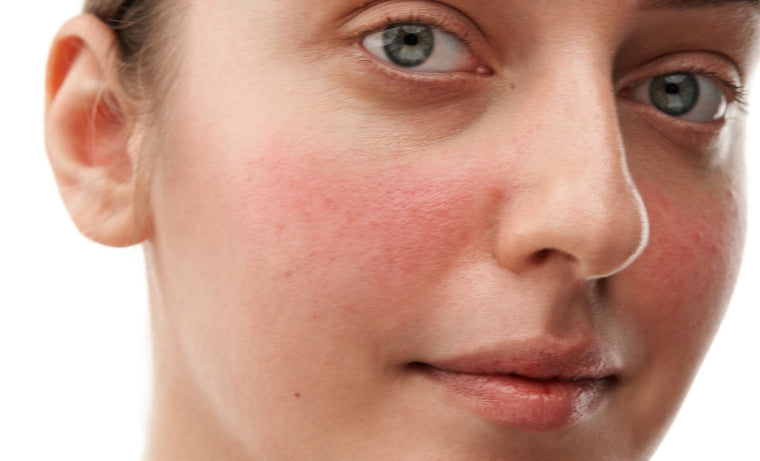
Kaip prižiūrėti jautrią odą?
Jei jums dažnai rausta veido oda, ypač skruostų, nosies ir net smakro ar kaktos srityje, šis įrašas yra tai, ko ieškote! Aptarsime, kaip susidaryti švelnią, bet efektyvią odos priežiūros rutiną,...
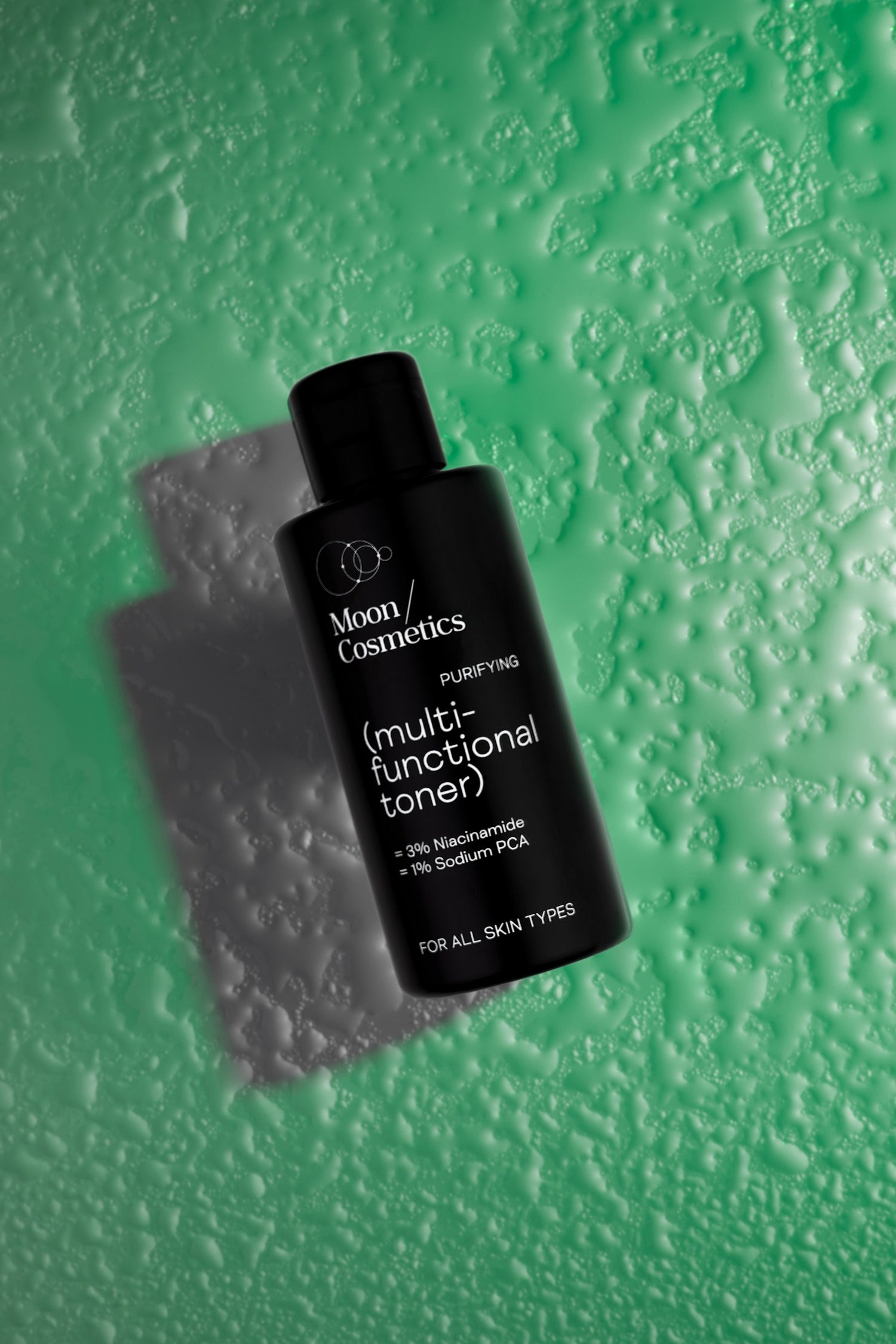
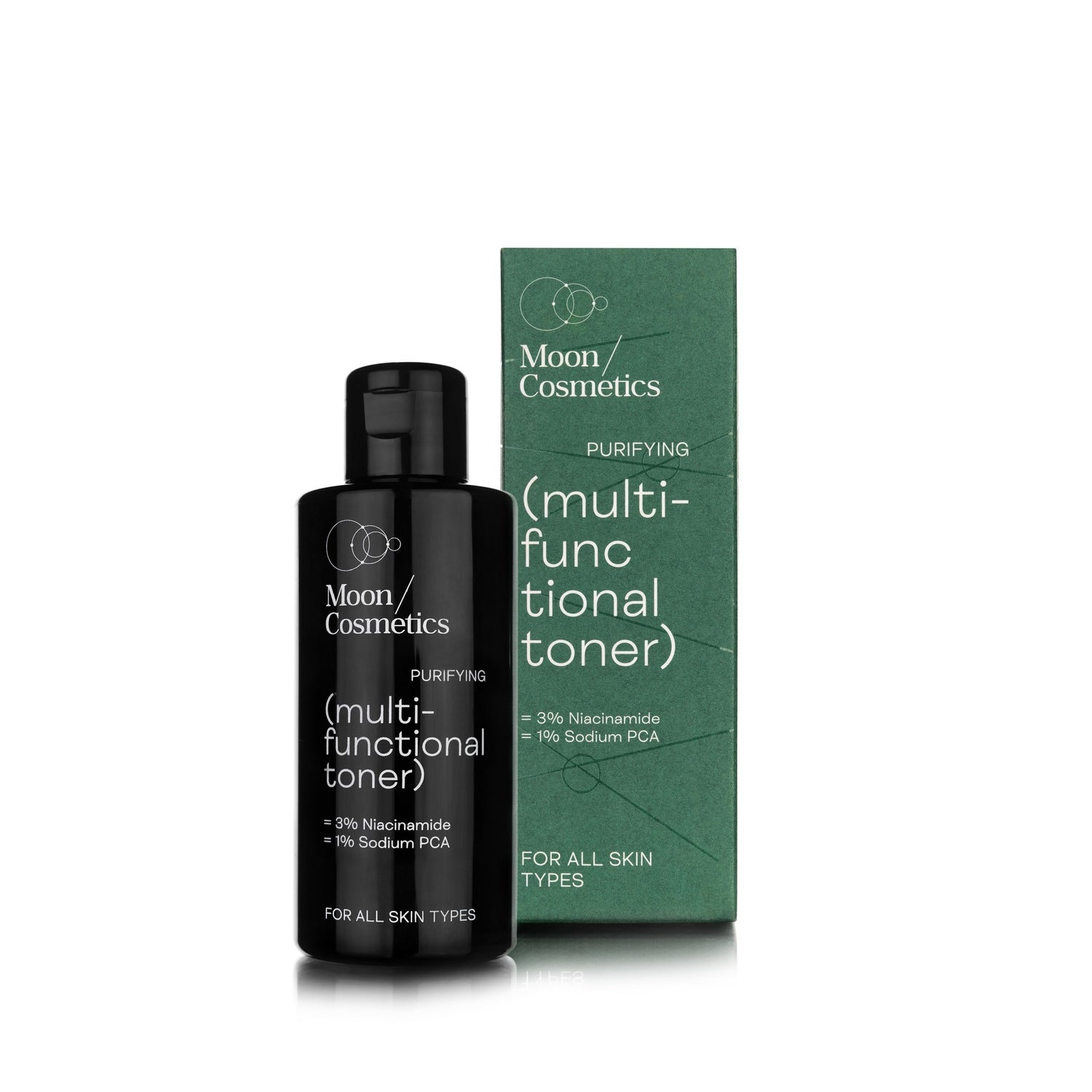
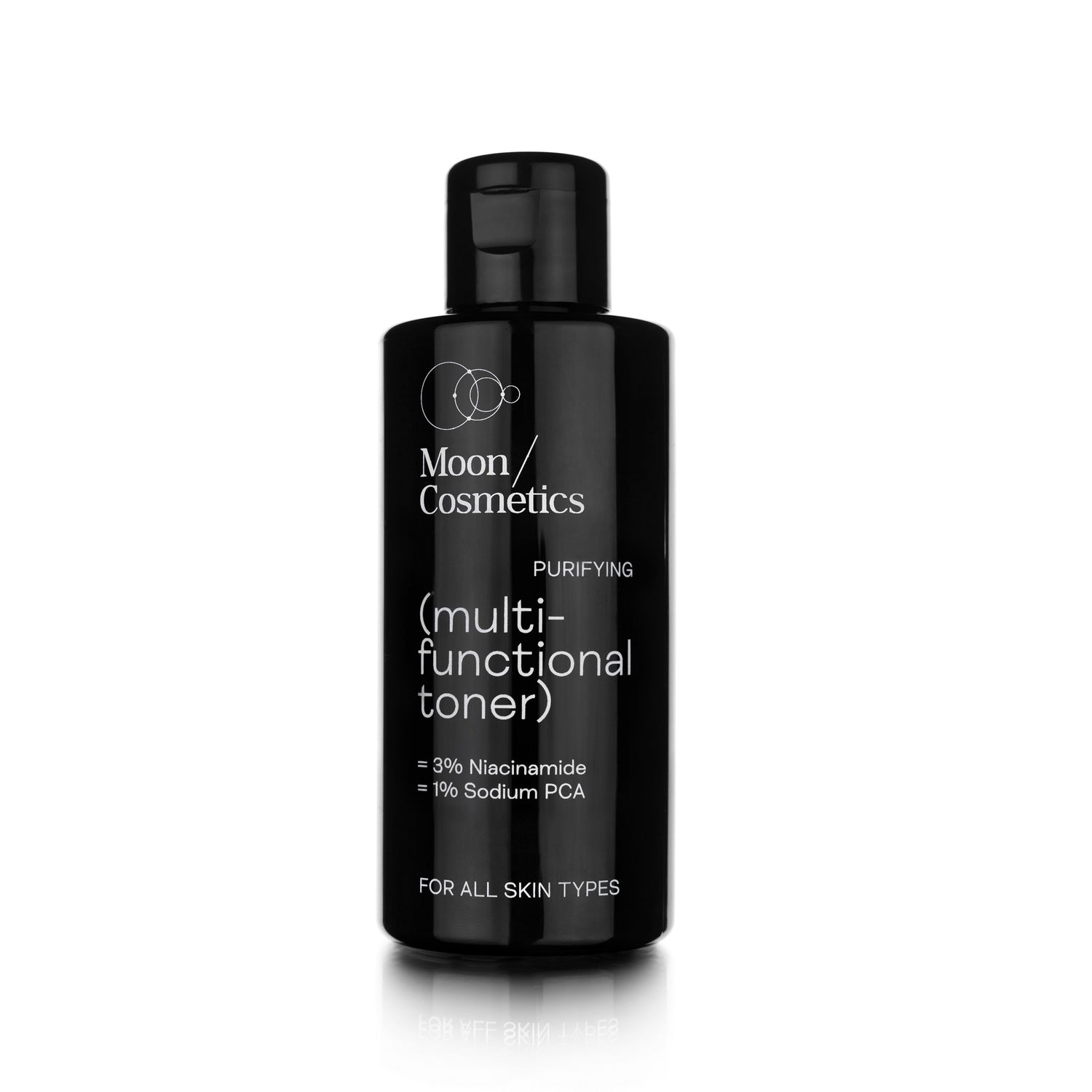


Couldn't load pickup availability
This multi-tasking facial toner contains 3% niacinamide, and 1% sodium PCA to balance skin pH, brighten skin, maintain moisture, and treat acne before subsequent skincare steps. Transepidermal water loss can be reduced by Niacinamide, also known as Vitamin B3, to increase the moisture levels of the skin. In addition, it improves epidermal proteins such as keratin, filaggrin, and involucrin production [1-3]. Restoring the proper moisture level of the skin is best achieved with Sodium PCA compared to glycerol [4]. Hyaluronic acid is a great supporter of human skin and can help you with wound healing too [5]. Collagen production stimulation, skin pigmentation improvement, and suitability for sensitive, dry skin or problems such as acne and rosacea are among the benefits linked to lactic acid [6]. The antifungal, anti-inflammatory, and antioxidant properties of Zinc PCA (L-pyrrolidone carboxylate zinc salt) make it a useful treatment for skin conditions like acne or seborrheic dermatitis [7-9]. Repeated application of this toner can minimize skin irritations and redness and heighten the efficacy of the skincare products used afterward.
Benefits:
Apply the toner after cleansing your face as the second step in your skincare routine, and before applying serum. Dampen a cotton pad with the toner and gently spread it over your face and neck. This should be done twice daily, once in the morning and once in the evening.
Important precautions: This product is meant for external use only. If you have a known allergy to any of the ingredients, avoid using it. Keep it out of reach of children.
AQUA, NIACINAMIDE, PROPANEDIOL, SODIUM PCA, ZINC PCA, SODIUM HYALURONATE, GLYCERIN, LACTIC ACID, CAPRYLYL GLYCOL, PHENYLPROPANOL.
The transfer of melanosomes can be hindered by niacinamide, an active cosmetic ingredient, making it appropriate for pigmented skin [10]. The agent niacinamide could also hinder the release of chemokines which have inflammatory properties so it is suitable for acne bacteria and is effective for acne-affected or pigmented skin. [2].
The production of epidermal proteins is boosted by niacinamide while preventing skin redness from glycation [11]. Niacinamide can also improve the appearance of skin with acne damage, rosacea, dermatitis, or psoriasis [12].
The skin's protective barrier can be restored with Sodium PCA, a component of the natural skin moisturizing factor or NDF [13]. The presence of hyaluronic acid in this product can help reduce skin irritations and wrinkles caused by premature aging while also hydrating the skin due to its compatibility with human skin [5].
At 5% or higher, lactic acid is an integral ingredient in this product, effectively treating pigmented skin issues with its exfoliating properties. Sun-damaged skin can be treated effectively due to its antioxidant properties [15]. Lactic acid (sodium lactate) is a natural skin moisturizing factor or NDF component that moisturizes the skin by binding water in it. Ceramide production is boosted in the skin, improving its protective barrier, retaining moisture, and resulting in fewer fine lines and firmer skin [14].
With Zinc PCA's ability to prevent UVA-induced metalloproteinase-1 production that breaks down collagen, it becomes a crucial ingredient that stimulates collagen production, helping to fight hyperpigmentation and photoaging [16]. Due to its antifungal, antioxidant, and anti-inflammatory properties, this ingredient is appropriate for treating skin issues, including seborrheic dermatitis or acne [7-9].
Hyaluronic acid (INCI: SODIUM HYALURONATE)
Sodium hyaluronate is also recognized as hyaluronic acid and naturally present in the human body. Its role is crucial in different tissues like the skin and connective tissues. Retaining water is one of its key functions, this leads to soft and smooth skin. Aging decreases hyaluronic acid production, leading to less elasticity and more wrinkles. Many face masks and eye creams contain hyaluronic acid as an active ingredient to keep the skin looking smoother for longer. One of the main functions of hyaluronic acid is to bind water in the top layer of skin cells, retaining moisture and reducing wrinkles. [13].
Niacinamide (INCI: NIACINAMIDE)
Niacinamide, a form of vitamin B3, has many benefits for the skin. It helps to visibly reduce enlarged pores, improve skin tone, reduce the depth of wrinkles, and strengthen the skin's protective barrier. Niacinamide can also help reduce skin damage caused by negative environmental factors and fight various skin problems such as acne and post-inflammatory hyperpigmentation.
Sodium PCA (INCI: SODIUM PCA)
Skincare and cosmetic products frequently contain a natural amino acid derivative known as sodium PCA or pyrrolidone carboxylic acid sodium salt. Sodium PCA attracts water to both deeper layers of skin and hair, helping retain moisture. The deep layers of the skin are hydrated due to this ingredient drawing moisture from them and locking it in the top layer. Sodium PCA is an effective ingredient for deep hydration of the skin and hair. Sodium PCA's plant-based variation is made from oils and fruits and is derived from pyrrolidone carboxylic acid's sodium salt. Additionally, synthetic production of sodium PCA is possible, reducing its impact on the environment.
Lactic acid(INCI: LACTIC ACID)
Containing both carboxy and hydroxy groups, lactic acid is an alkanoic acid that is identified by its INCI name LACTIC ACID. The clear, syrupy LACTIC ACID liquid is colorless or slightly yellow and can be effortlessly mixed with water and alcohol. Various bodily fluids including sweat, muscle serum, kidney, bile, and saliva contain L-(+) lactic acid. Being an alpha-hydroxy acid, lactic acid has moisture-absorbing abilities. Lactic acid lactates perform an essential function in metabolic processes by breaking down sugars during lactic acid fermentation. In addition to breaking down sugars during fermentation, lactic acid helps balance the skin's pH. This helps maintain a balanced pH value of the skin. Lactic acid's hygroscopic properties can assist in skin moisture, along with proteins, sugar, and urea. Lactic acid is frequently utilized in skin creams to address dry skin areas. A combination of other substances is typically used to regulate the pH level of skin care products and safeguard the skin's protective acid layer from harm. In addition, lactic acid's keratolytic properties that prevent keratinization are utilized in skin care and stratum corneum improvement products. Liquid soaps rely on lactic acid's ability to eliminate bacteria [12].
Zinc PCA (INCI: ZINC PCA)
It is a component utilized in skincare for conditioning the skin. Inhibiting destructive enzymes is how Zinc PCA, a skincare derivative of zinc, counters the aging process [16].
[1] OBLONG,
J. et al. Effect of niacinamide on collagen synthesis and markers of
keratinocyte differentiation. In 60th Annual Meeting of the American Academy
of Dermatology. 2002.
[2] SURJANA
D, Damian DL. Nicotinamide in dermatology and photoprotection. Skinmed. 2011
Nov 1;9(6):360-5.
[3] KAWADA,
Akira, et al. Evaluation of anti‐wrinkle effects of a novel cosmetic containing
niacinamide. The Journal of Dermatology 35, no. 10, 2008:
637-642.
[4] DRAELOS,
Zoe D. The science behind skin care: moisturizers. Journal of cosmetic dermatology,
2018, 17.2: 138-144.
[5] ZHU,
Jieyu, et al. Applications and delivery mechanisms of hyaluronic acid used for
topical/transdermal delivery–a review. International journal of
pharmaceutics, 2020, 578: 119127.
[6] ABD ALSAHEB, Ramzi A., et al.
Lactic acid applications in pharmaceutical and cosmeceutical industries. Journal
of Chemical and Pharmaceutical Research, 2015, 7.10: 729-735.
[7] TAKINO,
Y., et al. Zinc l‐pyrrolidone carboxylate inhibits the UVA‐induced production
of matrix metalloproteinase‐1 by in vitro cultured skin fibroblasts, whereas it
enhances their collagen synthesis. International journal of cosmetic science,
2012, 34.1: 23-28.
[8] ROSTAN,
Elizabeth F., et al. Evidence supporting zinc as an important antioxidant for
skin. International journal of dermatology, 2002, 41.9: 606-611.
[9] LANG,
Carol, et al. Anti-inflammatory effects of zinc and alterations in zinc
transporter mRNA in mouse models of allergic inflammation. American Journal
of Physiology-Lung Cellular and Molecular Physiology, 2007, 292.2:
L577-L584.
[10] HAKOZAKI,
T. et al. The effect of niacinamide on reducing cutaneous pigmentation and
suppression of melanosome transfer. British Journal of Dermatology 147,
no. 1, 2002: 20-31.
[11] ABDULLAH,
K. M., et al. Inhibitory effect of vitamin B3 against glycation and reactive
oxygen species production in HSA: An in vitro approach. Archives of
biochemistry and biophysics, 2017, 627: 21-29.
[12] BAINS,
Pooja, et al. Nicotinamide: Mechanism of action and indications in dermatology.
Indian journal of dermatology, venereology and leprology, 2018, 84: 234.
[13] NADARZYNSKI,
Alexandra; SCHOLZ, Jonas; SCHRÖDER, Markus S. Skin Barrier Enhancing
Alternative Preservation Strategy of O/W Emulsions by Water Activity Reduction
with Natural Multifunctional Ingredients. Cosmetics, 2022, 9.3: 53.
[14] ALGIERT‐ZIELIŃSKA,
Barbara; MUCHA, Paulina; ROTSZTEJN, Helena. Lactic and lactobionic acids as
typically moisturizing compounds. International journal of dermatology,
2019, 58.3: 374-379.
[15] HUANG,
Huey-Chun, et al. Lactic acid bacteria and lactic acid for skin health and
melanogenesis inhibition. Current Pharmaceutical Biotechnology, 2020,
21.7: 566-577.
[16] TAKINO,
Y., et al. Zinc l‐pyrrolidone carboxylate inhibits the UVA‐induced production
of matrix metalloproteinase‐1 by in vitro cultured skin fibroblasts, whereas it
enhances their collagen synthesis. International journal of cosmetic science,
2012, 34.1: 23-28.
[17] Online Access: https://cosmileeurope.eu/lt/inci/sudedamoji-dalis/14809/sodium-hyaluronate/
[18] Online access: https://cosmileeurope.eu/lt/inci/sudedamoji-dalis/7749/lactic-acid/
What is a tonic?
Facial toner is a liquid that rapidly seeps into the skin, providing hydration and restoring the pH balance of the skin. Essentially, toner serves as a preparatory step for the remainder of your skincare regimen, including serums, moisturizers, and rejuvenating creams.
How to use a multi-functional face tonic?
To apply toner, dampen a cotton pad with the product and apply it on your clean face before the serum. Alternatively, you can also pour a few drops of toner onto your palms and gently pat it onto your facial skin using your fingertips.
What kind of skin is the multifunctional face tonic suitable for?
This multi-functional product is appropriate for every skin type, and can effectively combat several issues like problematic marine skin, loss of clarity, pigmentation, and initial aging signs, making it an excellent solution.
Is tonic essential in my skin care routine?
No, tonic is not necessary in your skin routine, but we recommend using it. The toner is designed to neutralize hard tap water, balance the skin's pH and prepare it for the following care steps.
Can micellar water replace tonic?
Can't. Micellar water is designed to remove dirt and make-up from the surface of the skin, while tonic is designed to neutralize hard tap water, balance the pH of the skin and prepare it for the following care steps.

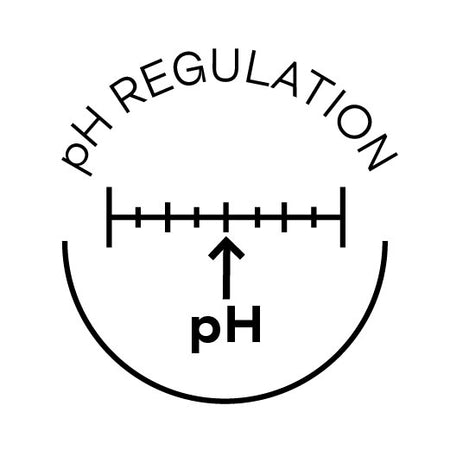
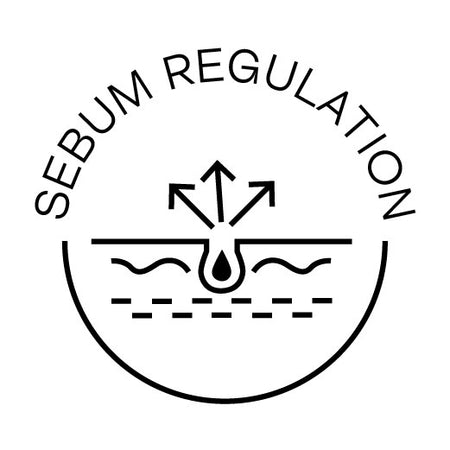

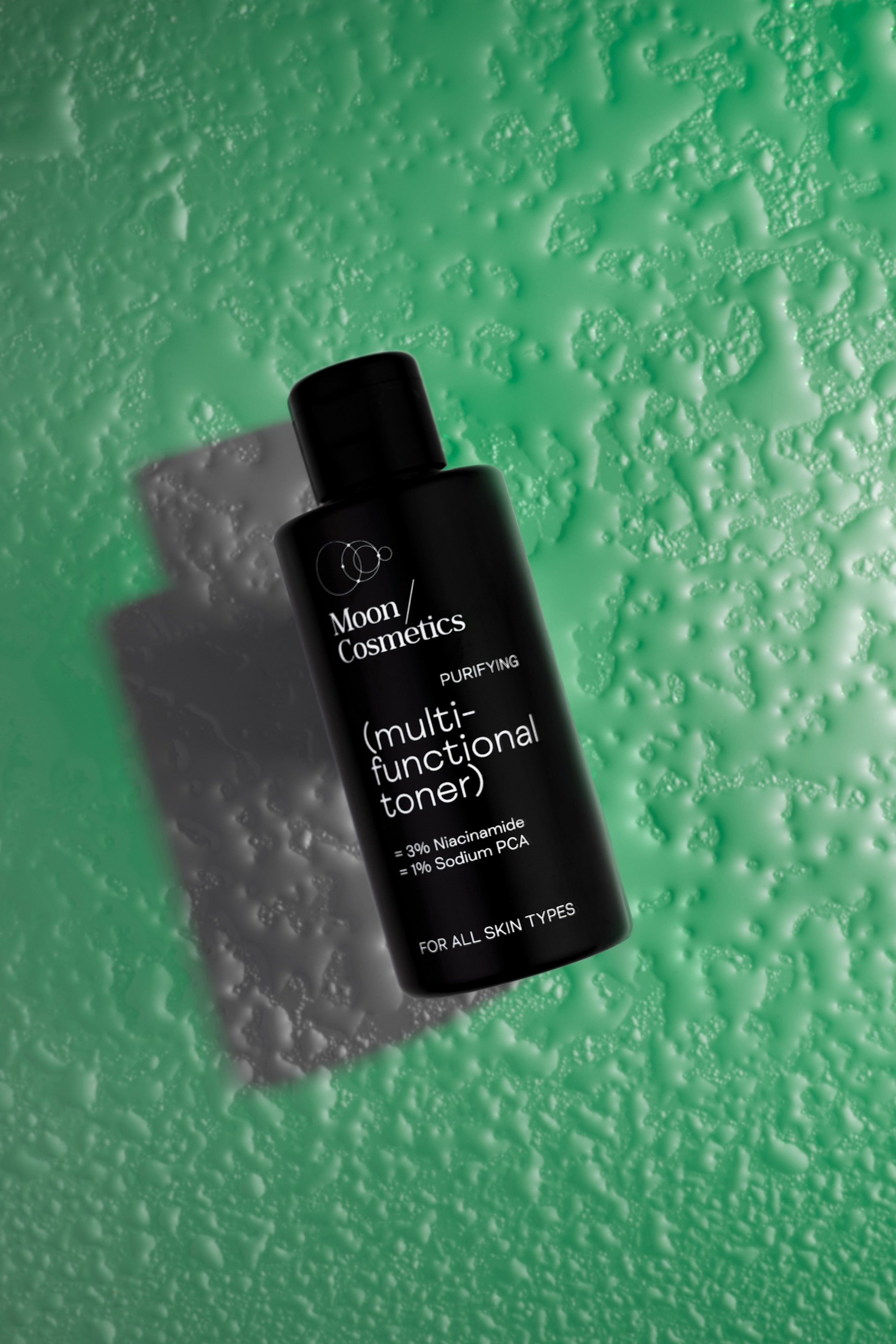
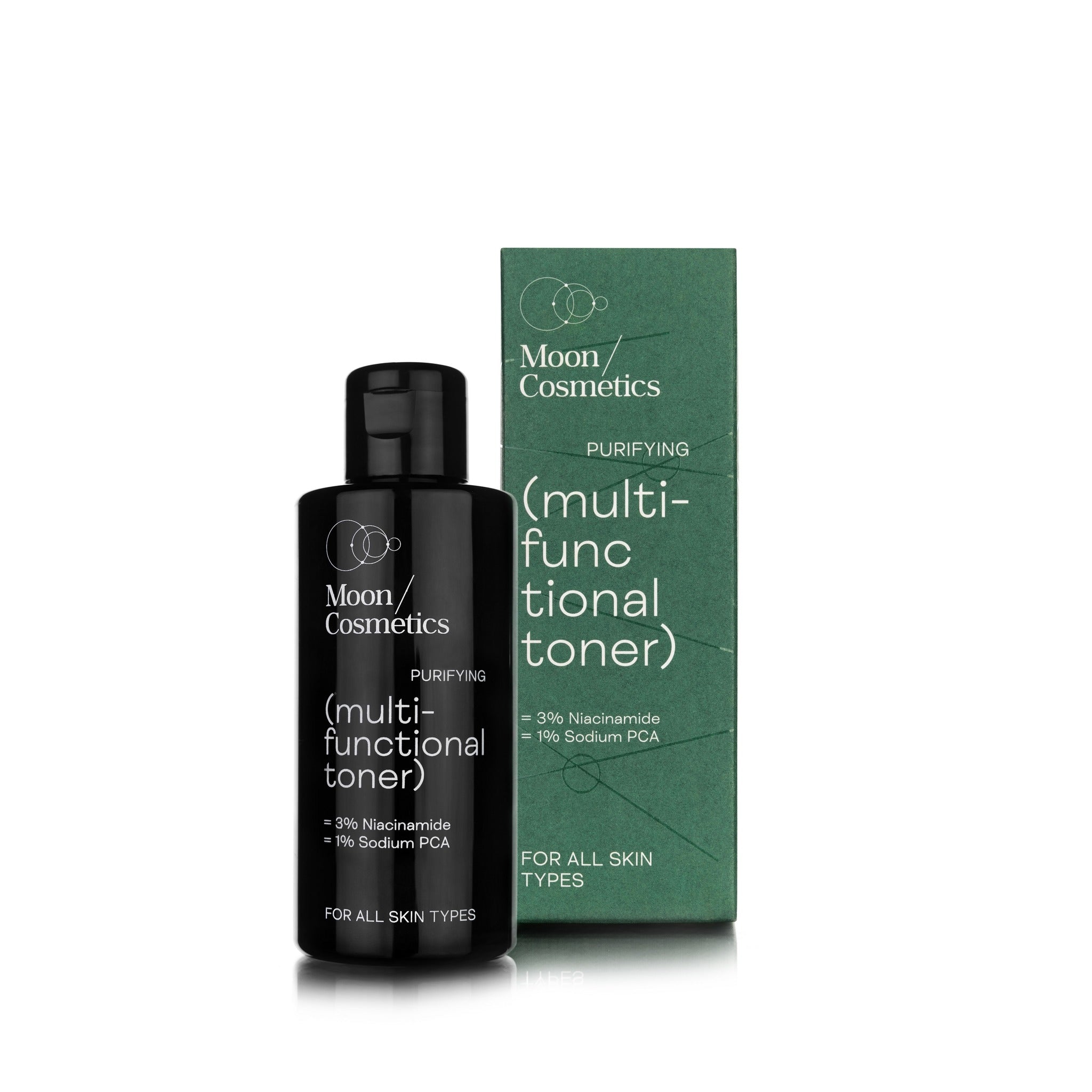

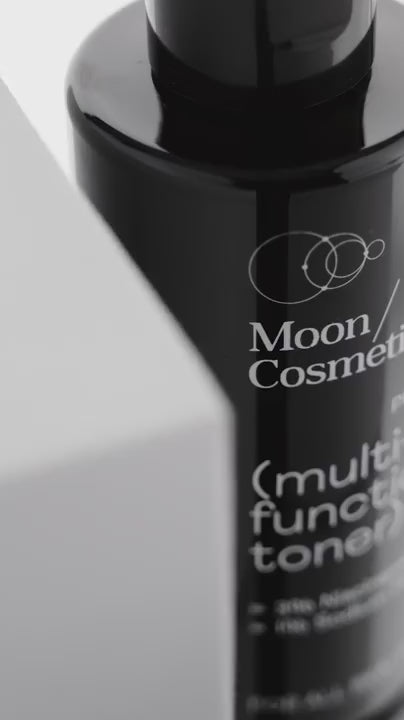

Multi-functional toner

Jei jums dažnai rausta veido oda, ypač skruostų, nosies ir net smakro ar kaktos srityje, šis įrašas yra tai, ko ieškote! Aptarsime, kaip susidaryti švelnią, bet efektyvią odos priežiūros rutiną,...
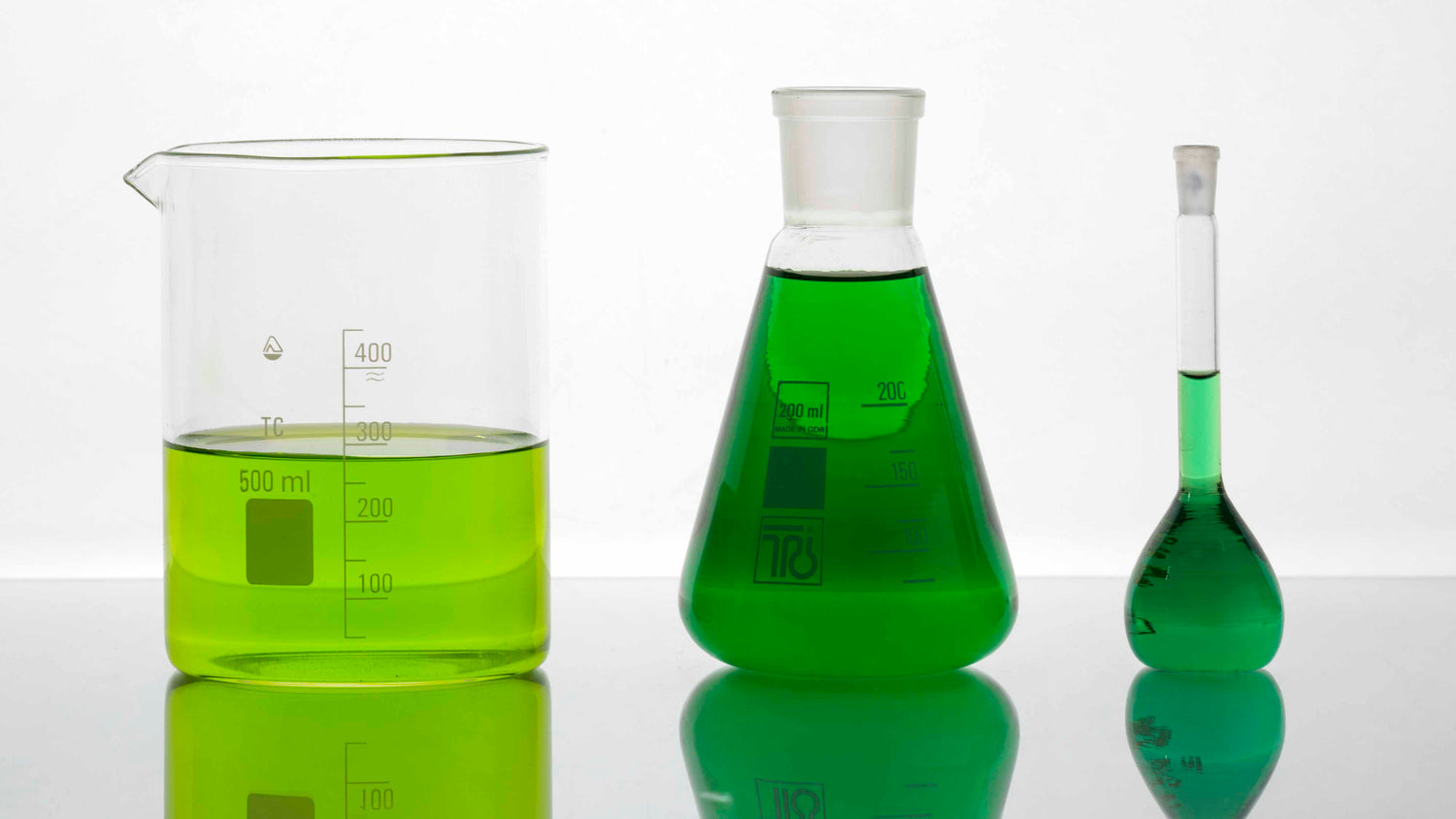
Pavasarį ir vasarą mūsų oda susiduria su įvairiais iššūkiais: didesniu saulės spindulių aktyvumu, dažnesniu prakaitavimu ir didele oro drėgme. Todėl itin svarbu pasirinkti teisingus produktus, kurie padėtų išlaikyti odą sveiką...
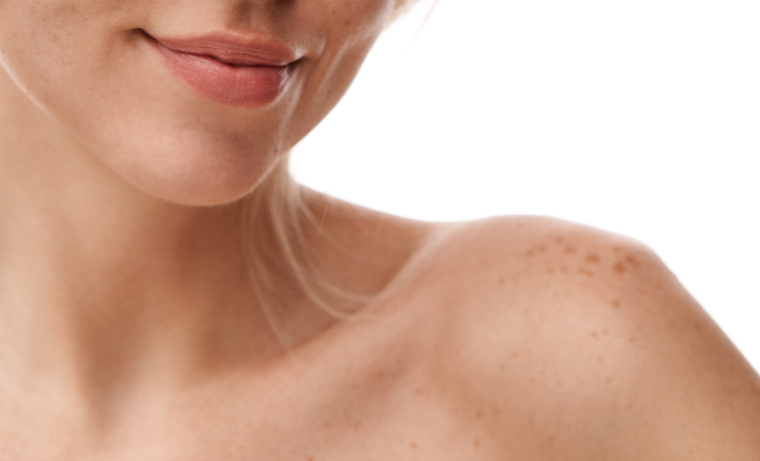
Su įvairiomis odos pigmentacijos problemomis susiduriame bene kiekvienas iš mūsų. Vieni kovoja su po spuogų likusiomis rausvomis dėmelėmis, kiti – su saulės spindulių sukeltomis dėmėmis. Suprasti, kaip atsiranda odos pigmentacija,...

